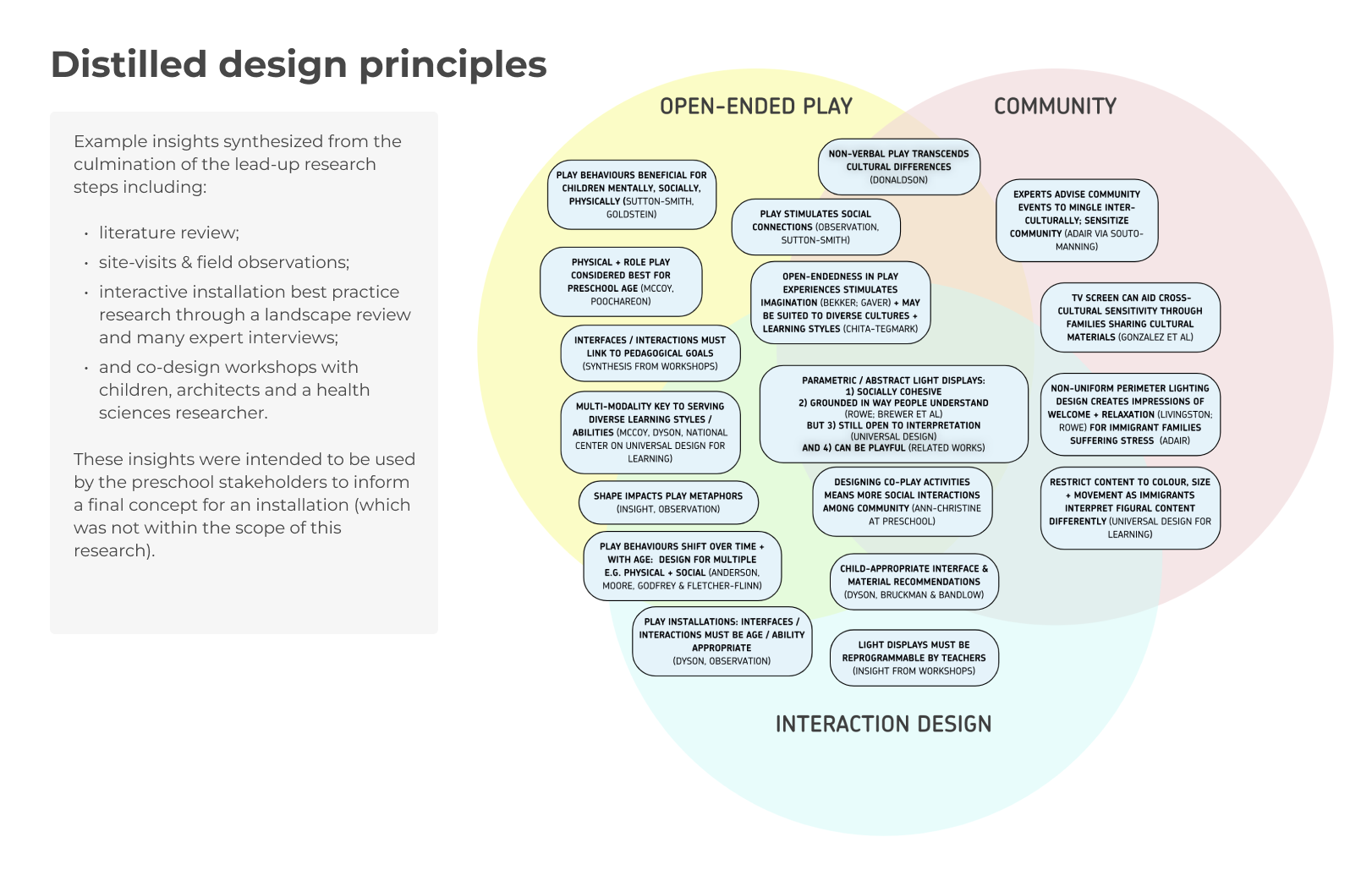SUMMARY


A literature review informed in-person co-design workshops, which in turn were structured around interactive prototypes built from scratch. Select highlights are below, details are available here (PDF).

How can a welcoming atmosphere be created for multicultural community members of a preschool that encourages playful interactions and possibly stimulates communication?
To become sensitized to the socio-cultural factors, I conducted a literature review in the following areas (for details, see the paper, Section 2.1):
Binder et al noted that co-design methods are “a way to meet the unattainable design challenge of fully anticipating or envisioning use before actual use takes place in people’s life-worlds” (Binder et al., 2011, pp. 157-8).
Brandt, Binder and Sanders suggest this is done through participation with the community so their perspectives go “hand in hand with the making of things that make the community imagine and rehearse what may be accomplished” (Brandt, Binder & Sanders, 2012, p. 148).



This research revealed many design implications for interactive installations to address social issues and aid in childrens’ development in the Örkelljunga preschool community.
